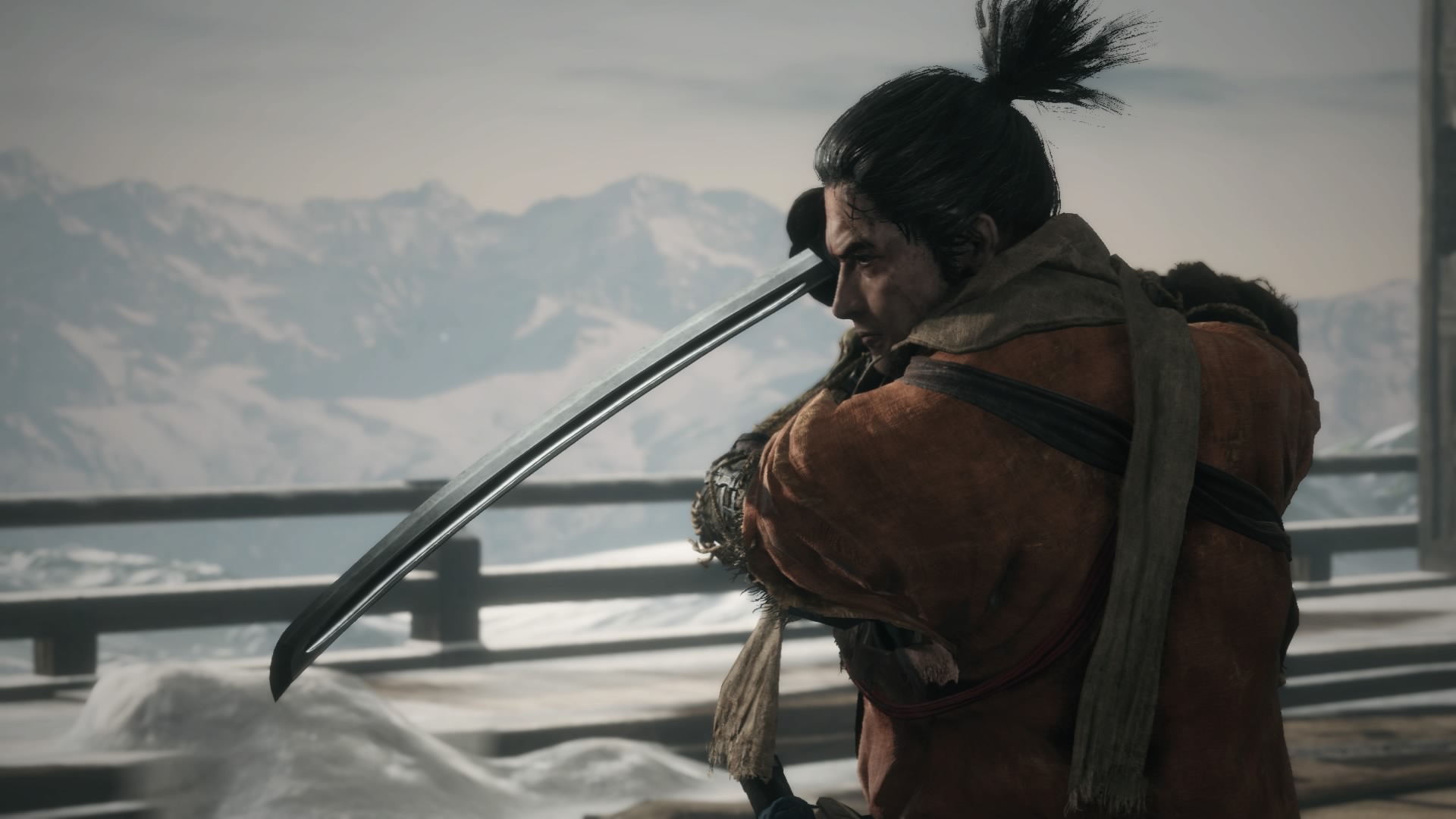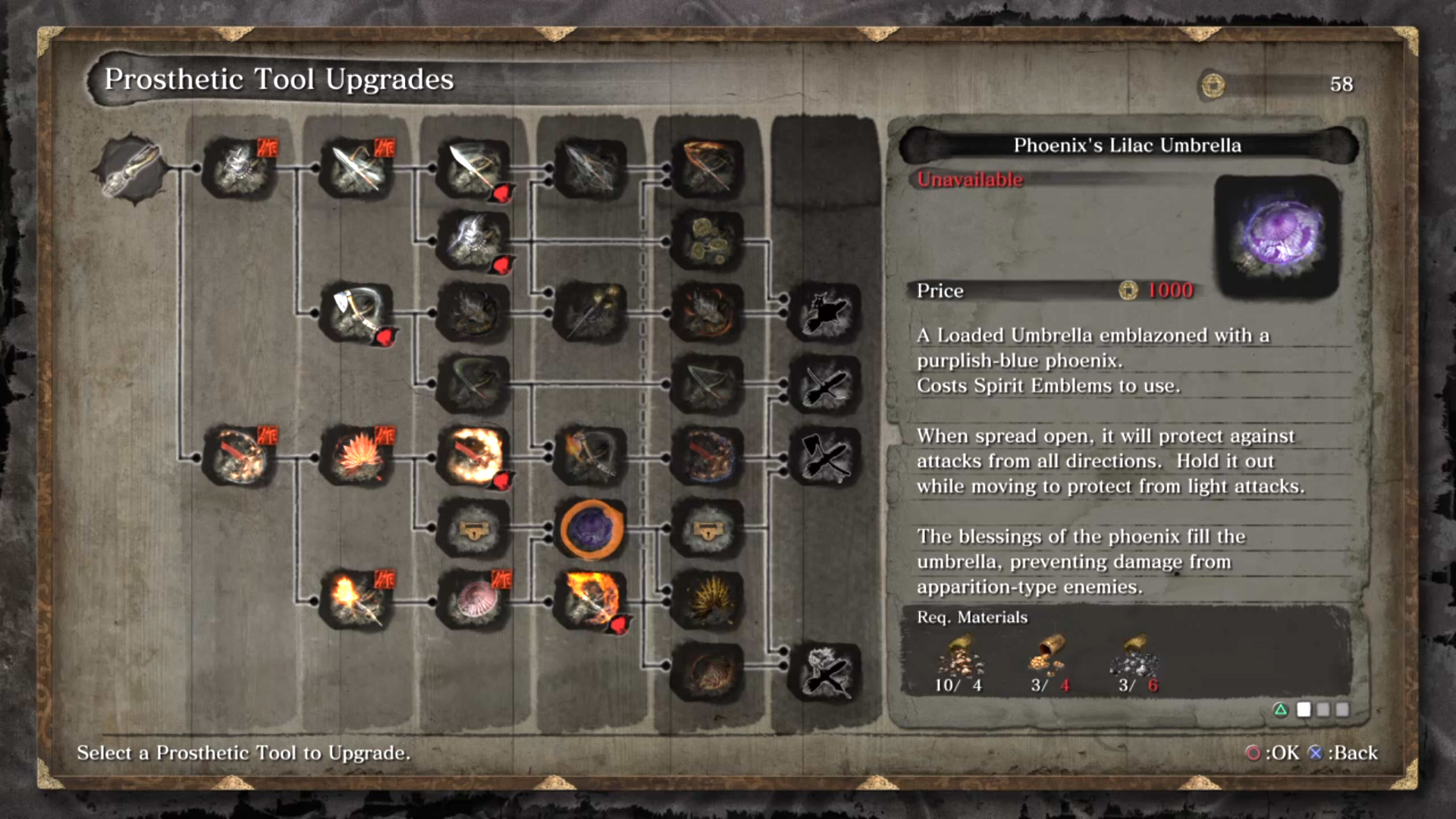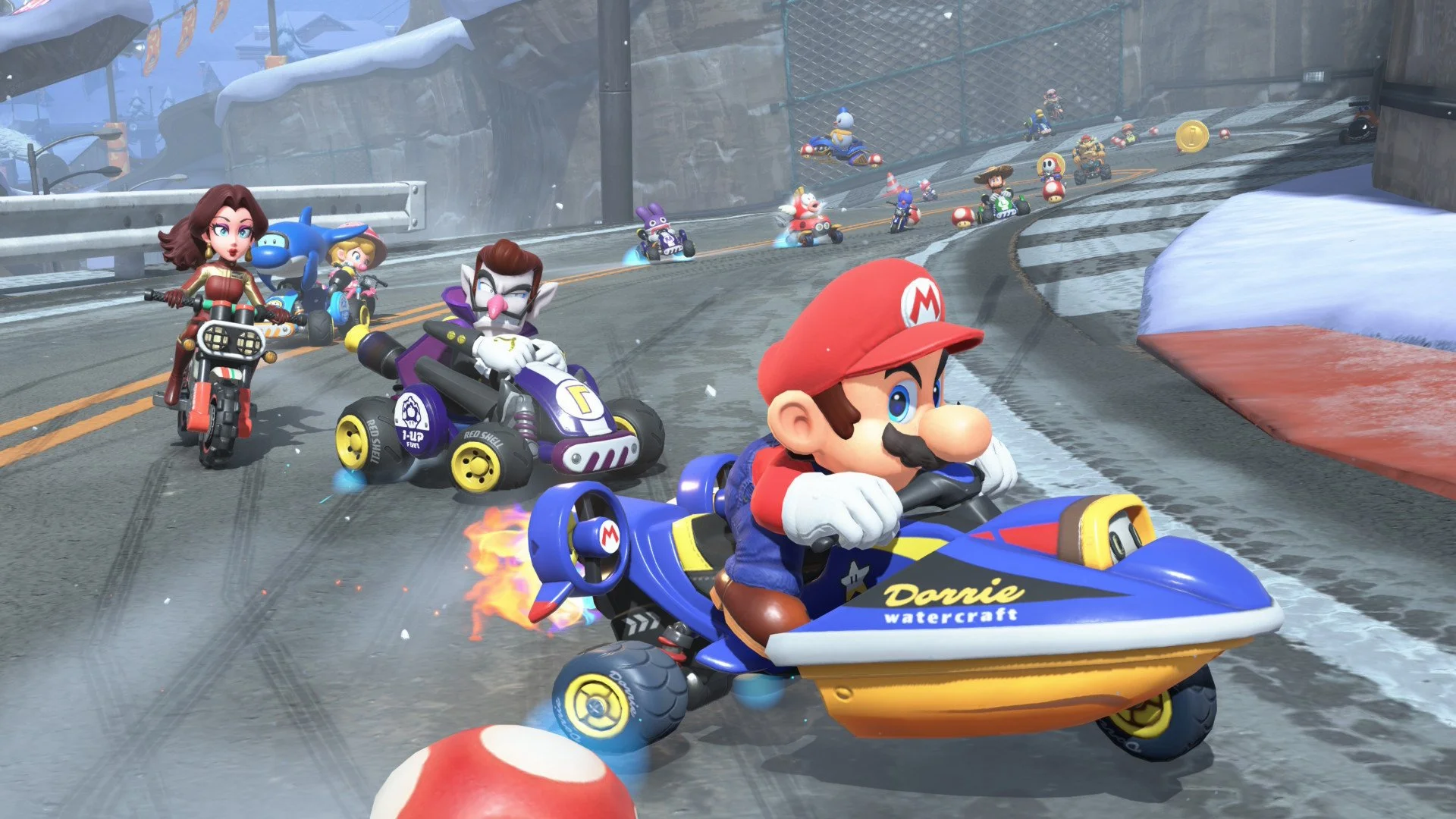Sekiro: Shadows Die Twice Review - Bushido blades and Postured knaves
/FromSoftware’s latest action-adventure game Sekiro: Shadows Die Twice is a hauntingly beautiful experience that confronts players with punishing yet rewarding difficulty, as well as combat and overall game mechanics that deliver a unique take on FromSoftware’s ‘Soulsborne’ formula. You will slash, sneak, and swing your way through the game’s dangerous yet lush environments. But more importantly, you will die. Twice. Actually, you will lose count of the number of deaths you’ll get to experience before you ever finish this game. But will all the deaths be oh so worth it and well earned for players willing to take the plunge into this gauntlet of a game? Let’s take a look!
Lone Wolf and Cub
Sekiro: Shadows Die Twice takes place in Sengoku Period Japan. It tells the story of the shinobi bodyguard known as The Wolf and his mission to protect and rescue his master - Kuro, a young boy who is a descendant of an ancient bloodline - from the notorious Ashina clan. The Wolf had failed to protect Kuro, losing his arm in the process. Fortunately, Wolf was found, nursed back to strength, and given a prosthetic arm by an old dude who’s obsessed with carving wooden statues. With newfound resolve, The Wolf continues his mission to rescue young master Kuro from the clutches of the Ashina clan.
Compared to FromSoftware’s recent action-adventure games (namely the Souls series and Bloodborne), Sekiro’s story and setting are properly fleshed out for the player. We even get to play as a protagonist that isn’t cosmetically molded to our preference or liking. Yep, there are no “Similar Face Man” characters to create that you can outfit to be a Knight, Wizard, or Hunter. In this game, you play as disabled shinobi Wolf/Sekiro, and him alone. This is his story.
My Own Ninja Way
Once I’d dipped my toes into the first hour of Sekiro’s tutorial area, I was anxious to see what kind of experience Sekiro would deliver gameplay-wise, since I hadn't tried any of the demos before. Similarly to what Demon's/Dark Souls fans experienced when they first played Bloodborne, I quickly discovered that movement and combat as the nimble Wolf/Sekiro is drastically different from our resident Hunters or Ashen/Hollow Ones. For starters, Wolf can instantly jump, wall-jump, grab ledges, and use his grappling hook to cover a lot of ground and vertical space when traversing the game’s plethora of locations. The game also introduces stealth as Wolf can also hug walls, crouch, and hide through tall patches of grass. Sneaking around and behind enemies is a viable strategy in Sekiro, since it nets you a Deathblow, which kills your poor victim in one hit. Not only can you stealth kill the usual grunts, but mini-bosses and sometimes bosses as well!
However, Sekiro’s stealth mechanics and gameplay are a bit underdeveloped on the AI side (kind of a blessing in disguise?) as the grunts’ visual cone/range can be at times laughably narrow. There was a moment where I literally sneaked sideways in an open area where a guard should’ve been alerted. He was already near getting suspicious, according to the warning markers that pop up above enemies whenever you’re about to be seen. But nope, once I was out of his line of sight, it’s as if he’d seen a ghost. SHINOBI SKILLZ.
But enough about movement and stealth mechanics. It’s time to dig into the meat and potatoes of the game: Combat & Character Progression.
Know Your Enemy, Know His Sword
In Sekiro: Shadows Die Twice, combat is a wholly different beast as compared to Bloodborne and Dark Souls. One of Sekiro’s main features is the introduction of “Posture” and how it affects your battles in the game. Wolf doesn’t have a stamina bar, which means that you can hack away at your enemy as much as you want. But you do have to watch out for Wolf’s Posture meter.
In Sekiro, Wolf and everyone in the game (grunts, mini-bosses, bosses) has a Posture meter. When going into combat, striking at enemies and getting hit depletes your life bar and builds up Posture. However, when you or your enemy block each other’s attacks, the blocker or attacker builds up their Posture in different ways. If you block an attack normally, you gain Posture. But if you manage to deflect an attack (by hitting the guard button at the moment your attacker strikes you), then your attacker will also build up tremendous amounts of Posture. By the time your opponent’s meter becomes full and flashing orange, they are susceptible to a Deathblow. However, if you get hit while your Posture meter is full and flashing, you'll be stunned for a few good seconds - enough for your enemy to finish you off.
Sekiro: Shadows Die Twice also introduces the concept of Perilous Attacks. Identified by a flashing red kanji character when executed, Perilous Attacks are lethal and sometimes unblockable moves that your enemies use. There are mostly three types of Perilous Attacks: The Thrust, which can be dealt with either by a Deflect/Parry or a Mikiri Counter (which entails pressing the dodge button at the moment your enemy’s thrust move connects), The Sweep, which can be dealt with by jumping over it, and The Grab, which must be avoided by either jumping, dodging, or just getting the flip out of the enemy’s grab range.
Sekiro’s combat and Posture mechanics, as well as the way the engine handles blocking and deflects, brilliantly manage to capture the feel of classic fictional portrayals of Japanese sword fights. From the clashing of katanas to the one-hit kills, they pretty much nailed it to a T. Once I’d gotten used to the game’s deflect move, I was Deathblow-ing samurai and ninja left and right, looking for openings while repeatedly parrying and slipping through their attacks. This is sword-fighting in an action game done right.
Pick Your Poison
Aside from the game’s basic combat mechanics, Wolf can also learn an ample amount of special abilities and tools via his Shinobi Prosthetic Arm and available Skill Trees. During the game, you’ll be able to accumulate skill points which you can use to unlock Combat Arts and Techniques from five different Skill Trees. These are unveiled via story progression or through texts/scrolls. For the Prosthetic Arm attachments and upgrades, you’ll be able to find and discover items that you can give to the Sculptor NPC in the game’s main hub. These upgrades range from the basic Loaded Shuriken that can one-shot hostile animals or disrupt enemy attacks, to other unique upgrades, like the Loaded Umbrella, which serves as a makeshift shield to block or even deflect attacks. Not only can you unlock Prosthetic Arm weapons, but you can also upgrade them into several more powerful variants. Is a certain enemy giving you a hard time thanks to its constant terror-type attacks? You might want to upgrade your Loaded Umbrella into a Phoenix’s Lilac Umbrella that can tank terror damage.
Unlocking Skills and Equipping Prosthetic Arm upgrades will allow you to personally outfit Wolf to handle the enemies and challenges you’re about to face. And boy, are there a lot of teeth-grindingly-tough foes waiting for you in Sekiro.
Only Wolves Die Twice
Of course, should all of your swordsmanship, ninja tools, and courage fail to give you victory and instead net you, well, death… Sekiro gives players a second chance at life through Resurrection! Whenever Wolf dies, you’ll be able to revive from death immediately by pressing the attack button (R1). Reviving yourself uses one Resurrection Node (the pink spheres near your life bar). At the start of the game, you are given two charges/Resurrection Nodes and can resurrect once. You can use the second node and have the ability to resurrect again by killing off a few enemies until it’s available. You can replenish your Resurrection nodes by resting at the Sculptor’s Idols that serve as checkpoints scattered throughout the game, or by using certain items.
If by chance you run out of resurrection charges and manage to die for good, Wolf will respawn to the last Sculptor’s Idol you’ve rested or prayed at. In true FromSoftware fashion, there are repercussions when it comes to dying in Sekiro. First, half of the Sen (the game’s currency) and Spirit Emblems (items required to activate your Prosthetic Tools) you’ve collected before you died will be gone. Second, dying a couple more times will spread out Dragonrot, a disease that only affects the game’s NPCs. This will affect and lock out some quests that NPCs can give you. Fortunately, you can cure Dragonrot by using an item called a Dragon’s Blood Droplet. Using one is enough to cure all NPCs afflicted with Dragonrot.
You're gonna have to answer to the bosses
Aside from the usual deadly grunts, guards, evil monks, and undead that are scattered throughout the game, Sekiro: Shadows Die Twice is also home to a dozen of notoriously dangerous mini-bosses and bosses. Bosses in Sekiro are special enemies that usually have two or more stocks of life. Some bosses (as well as mini-bosses) are optional and can be skipped, but there are those whom you really need to beat in order to progress through the game. Funnily enough, the first unskippable mini-boss that you’ll encounter in the game is such a contrast to the typical early bosses in Dark Souls or Bloodborne. Oh yeah, I’m talking about the first wall most players, who are AND who aren’t new to 'Soulsborne’ games, will get to experience within their first few hours. I’m talking about the Chained Ogre.
The Chained Ogre found in Ashina Outskirts is a horrible yet clever mini-boss. It is smartly designed as the game’s proper “intro boss fight”. He has three unblockable grab moves that will screw you over if you’re not careful, and most of his other attacks can, most of the time, scare away new players into playing it safe (watch out for that dropkick!). But the Chained Ogre is such an integral mini-boss in the game as it properly teaches you Sekiro’s game mechanics through punishing brute force. Anyone who has played Bloodborne or Dark Souls might have a hilariously frustrating time with The Chained Ogre as he challenges these games’ mechanics and philosophy by beating you to a pulp over and over until you either scream for your brother or mommy’s help, or manage to finally “get it” and utilize Sekiro’s own unique mechanics, such as jumping, using your grappling hook, or sneaking up on The Chained Ogre to execute a Deathblow.
This clever approach of teaching you Sekiro’s mechanics also carries over through your fight with Lady Butterfly; during the fight, I was frustrated at how my attacks didn’t impact enough to be able to land a fatal hit. Taking a safe and slow approach of positioning yourself to bait an attack, blocking, chipping in two quick attacks, then moving away and repeating this process really won’t cut it during this boss fight. Lady Butterfly teaches you more about being aggressive and the importance of Posture. You’ll eventually learn how to do what I call “Deflect Dances”, wherein you’ll parry or deflect enemy attacks while they also deflect yours, which results in building up your enemy’s Posture meter at a very fast rate.
As educational as the aforementioned fights are, each of Sekiro’s bosses is vastly different. They are all so cleverly designed that defeating them sometimes feels like solving a puzzle. And they are all brutally challenging. Most notably and without spoiling anything, there’s one boss in the middle of the game that forces you to approach the challenge in a wholly new and different manner from anything that’s come before. That’s what most of the boss fights and mini-boss fights in this game are about, really: Sekiro makes you think outside the box, thanks to the plethora of tools at your disposal and the use of stealth to your advantage. One good example is an early mini-boss whom I spent a gruesome amount of time trying to fight head-on. After a few head-scratching hours, a friend decided to give me one good tip, which is to confront the guy and let him approach, then run towards him and hide at a nearby shrine, wait till he gives up aggro on me, then proceed to deliver a Deathblow. The hours and deaths I spent on this mini-boss came to an end in under a minute.
The power is inside you all along!
As I’ve managed to beat a few good number of bosses and mini-bosses while progressing through the game, an amusing thought ran through my mind. Sekiro isn’t an action-RPG like Demon’s/Dark Souls and Bloodborne. I’m aware that I’ve been comparing these three games to death already, but it’s fascinating to see FromSoftware evolve their unique brand of action/adventure genre offerings. We the players have gone from the blank slate of a hefty Souls character fussing over stats, spells, and gear, to the aggressive and visceral Hunters of Bloodborne, for whom dodging and relentless combat was the main focus, to Sekiro’s Wolf, whose clever fighting style feels like the result of a focused effort from FromSoftware to take their high-speed, risk/reward concepts to the next level. Sekiro represents a new peak for FromSoftware’s action game philosophy of greatly empowering the players, while making them earn every last bit of their success.
Players never get to upgrade stats the way you can farm them in FromSoftware’s previous action RPGs. In fact, there’s only three main stats in the game: Attack Power, Vitality, and Posture. The only way to upgrade these stats is by collecting prayer beads for Vitality/Posture (you actually need four beads to upgrade your Vit/Posture), and “Memories” for Attack Power. You want to guess how to procure these items in the game? That’s right, it’s by beating mini-bosses and bosses. Let that sink in for a good minute. The game’s unique difficulty curve doesn’t rely on your character’s level and gear. When you face a boss and you have trouble beating them, you can’t simply just farm for “Souls” or “Sen” to upgrade your ninja tools and hope it’ll get easier. You beat the boss by being better at the game. It’s hard and cliché to say it, but you do have to “git gud” at some point in order to overcome Sekiro’s challenges. But once you’ve figured out the flow of the game and how to deal with its boss fights, every battle and victory is well-earned and satisfying. The more you beat bosses, the stronger you and Wolf become, so by the time you reach the final boss, you’ll feel that a huge weight has been lifted off your back. And of course, in true FromSoftware fashion, you will have the fight of your life molded into Sekiro’s exhilarating (and frustrating!) final boss battle.
Closing Thoughts
By the time I finished the game, Sekiro: Shadows Die Twice inspired me to do something I wouldn’t ever really bother doing in a single-player FromSoftware game: I immediately started New Game+ and ran through the insanity of the main campaign all over again. I had a sudden fit of curiosity as to how I’d fare from the beginning given the knowledge and skill set I’d accumulated during my first run. It also helped the game has numerous ways of progressing through the campaign, even providing different endings or outcomes by its conclusion (there are a total of four confirmed endings in Sekiro: Shadows Die Twice).
Deep down, Sekiro: Shadows Die Twice is an amazing action-adventure game and a fresh departure from the titles that FromSoftware built its reputation on. Sekiro’s still a difficult game, but it rewards players who are eager to learn how to play and use the tools and abilities given to them. It is always a delight whenever FromSoftware comes up with a new IP to give its own beloved franchises some form of competition, but even better than that is seeing Sekiro: Shadows Die Twice stand toe-to-toe with its brutal siblings as a showcase for how FromSoftware’s approach to the action genre has evolved even further.
9/10
Highlights
(+) An astonishing lineup of boss and mini-boss encounters
(+) The game presents Sengoku-period Japan with hauntingly colorful and lush environments for players to explore
(+) Deeply satisfying combat mechanics
(-) Stealth mechanics are a bit wonky thanks to the enemy AI
(-) The game’s camera sometimes doesn’t cooperate with you
What I’ve Played
Lost my hand during the first few minutes of the game.
Spent 30+ hours mostly dying and slowly progressing through the story
Defied “The Iron Code” (or did I really?)
Cursed 267 times during the battle with the Guardian Ape
























Death Stranding 2: On the Beach delivers higher visual fidelity, consistent performance across the board, and a few new tricks that make gameplay more accessible, challenging, and fun. If you have the patience and come in with an open mind, you’ll be in an exclusive group of people who will struggle to describe this experience to anyone else.